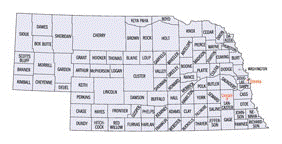Geography Program

Geography Program: Faculty Publications
Document Type
Article
Date of this Version
1987
Abstract
Geographic explanations about circulation and movement are largely concerned with the role of distance in spatial behavior. More specifically, many geographic principles of location are based on the friction of distance as it tends to restrict circulation and movement of humans. Likewise, the geography of routes usually involves concepts of least effort and the minimization of travel distance. A few path. ways of movement, however, do not seem to entirely fit these basic geographic concepts.
When people engage in religious activities that involve travel along a prescribed path, the role of distance seems to function quite differently than expressed by the major geographic principles. To a certain degree, several forms of behavior associated with sacred spaces tend to challenge fundamental principles of geographic behavior; but movements along sacred paths especially contrast with established knowledge.
It is important, therefore, to examine the specific religious activities (namely, pilgrimages, circumambulations, and processions) that involve movement along sacred paths. It is hoped that this paper, which focuses on aspects of pilgrimages along sacred paths, will contribute to both the geography of religion and of human movements.


Comments
Published in THE NATIONAL GEOGRAPHICAL JOURNAL OF INDIA Vol. 33. pt. 4, December 1987: 448-456. Re-published in TRENDS IN THE GEOGRAPHY OF PILGRIMAGES: HOMAGE TO DAVID E. SOPHER, ed. R. L. Singh & Rana P. B. Singh (Varanasi: Banares Hindu University, 1987), pp. 96-104. Copyright 1987 Robert H. Stoddard.